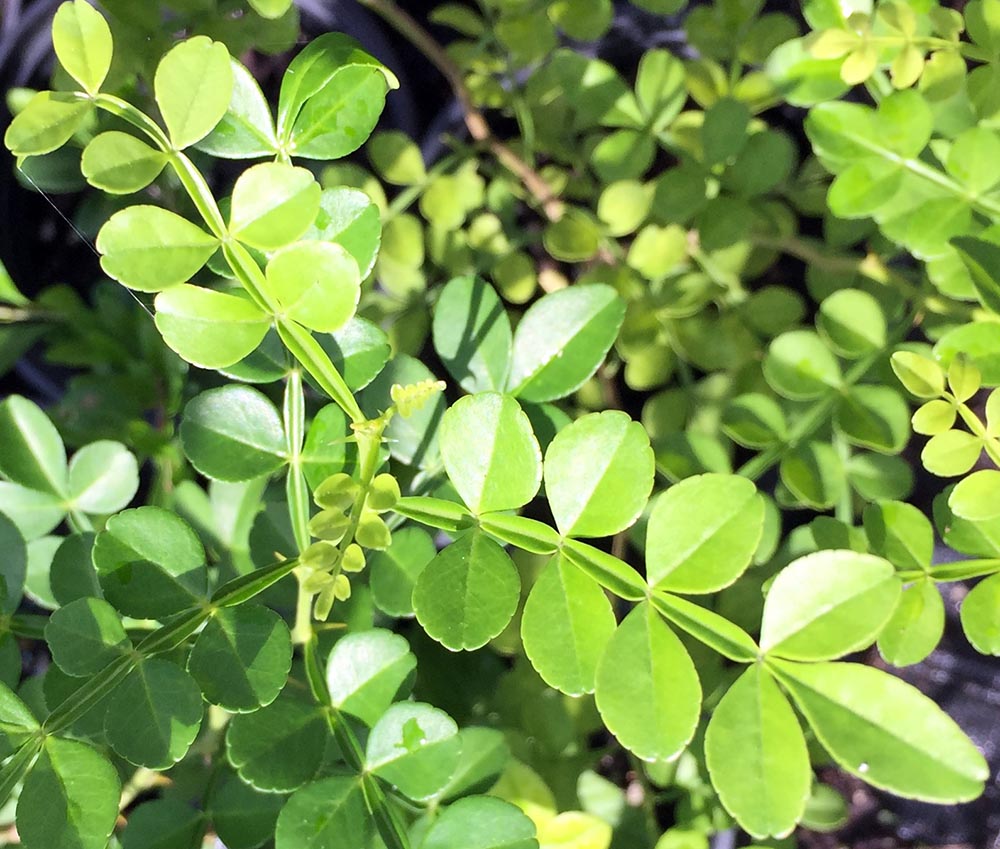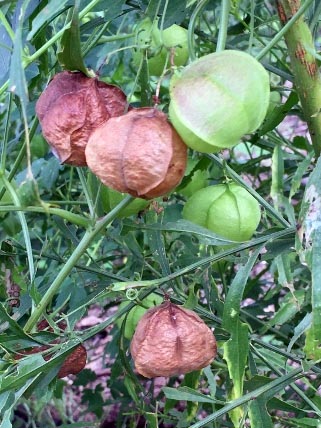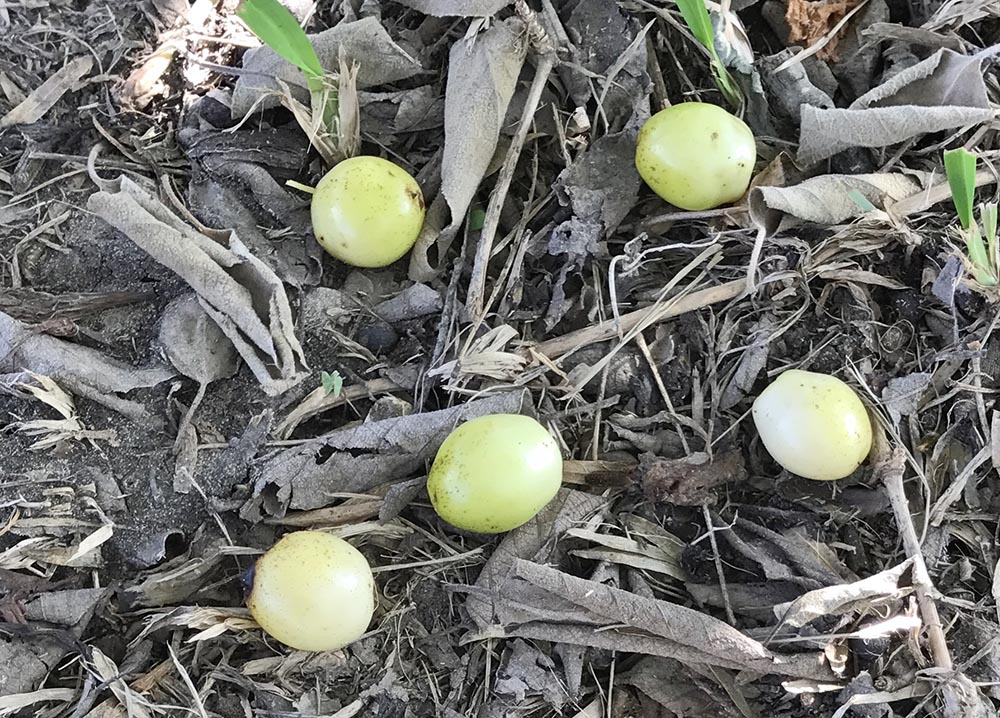By Anita Westervelt, Rio Grande Valley Chapter, Texas Master Naturalist
Nature decorates itself for Hallowe’en with showy orange pods of native balloon vine, Cardiospermum halicacagum. Seedpods glow luminescent orange in rays of the rising sun like strings of tiny pumpkin lights. One-inch-diameter globes grace thin stems interwoven through tree branches, low vegetation or fence lines.
This plant is safe to gently examine; no scary thorns or slimy sap. Spent pods burst open at the bottom, ejecting two or three small, round, white-tipped black seeds. Quail eat these seeds once they’ve been released from the pod.
Balloon vine can bloom throughout the year for a continual show as pods develop and turn shades of green, orange and brown as they mature. Leaves serve silver-banded hairstreak butterflies as a larval plant.
On a creepier note, the native shrub snake eyes, Phaulothamnus spinescens, might give you pause. The unusual fruit, when ripe, forms translucent berries, each of which contain one round black seed, giving the plant its name. Forget about plucking some to take to show friends. Thorns, although considered soft, make themselves known when an arm is reached into the shrub’s depth.
Other native trees and shrubs might elicit a scream or two when the uninitiated walk too closely. A hundred tiny claws could grab a bare arm or snag clothing like a band of witches’ cats halting any progress.
More likely, it’s a native tree called Wright’s catclaw, Acacia wrightii. The branches have recurved cat-claw-like armor on the branches. Its friendlier elements are feathery leaflets, like other native trees in the mimosa family, and aromatic flowers that push out after a rain.
Colima, Zanthoxylum fagara, is a lovely shrub with unique leaf stems. When crushed, the lime-green leaves smell of citrus. Not one to tangle with, it also is armed with recurved prickles. In its gentler persona, colima is host to giant swallowtail butterflies whose caterpillars eat the interesting leaves.
Granjeno, Celtis pallida, together with Wright’s catclaw and colima make a formidable, impenetrable security hedge that just might keep out gremlins and ghouls. Granjeno’s paired spines on zig-zag, snarling branches don’t easily give up the human who has become entangled. Wildlife are more inclined to appreciate this wicked native. It is a host plant to the American snout butterfly.
Wild Olive, Cordia boissieri, although unarmed, is not to be left out of this spooky tale. This popular native tree blooms all year. It produces small clusters of large, funnel-shaped white blossoms with yellow centers, offering a steady supply of nectar to hummingbirds, butterflies and other beneficial pollinators.
After blooms wither, wild olive produces a drupe with a seed similar to an olive pit. The ripened, slimy white fruit drops to the ground, looking like eyeballs waiting to be collected and used in a witch’s brew. In reality, birds and wild animals eat the fruit.
Although seemingly rife with unfriendly vegetation, the Valley’s armed trees provide shelter and nesting sites for birds and shelter for animals; butterflies and other pollinators draw nectar when plants are in bloom; birds and critters eat the fruits; and wildlife browse leaves and twigs.








